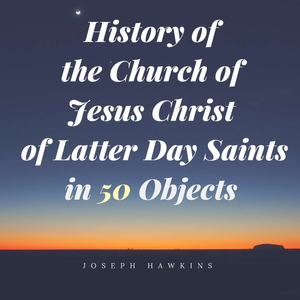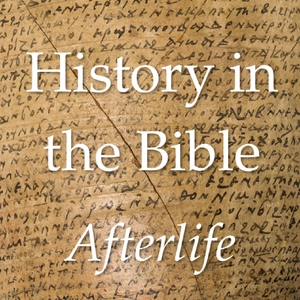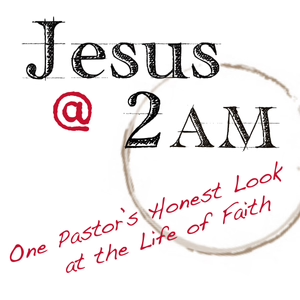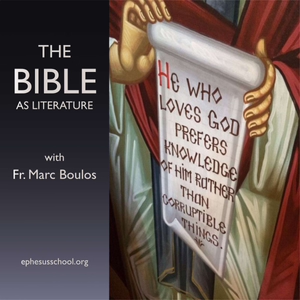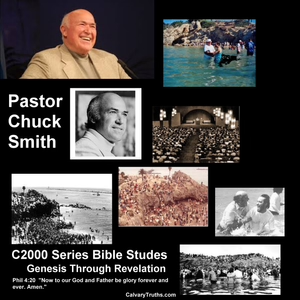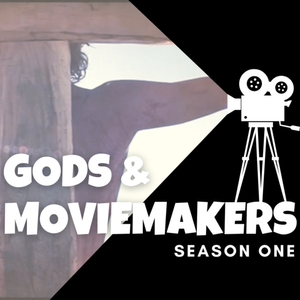
The Last Temptation of Christ (1988)
12/14/22 • 41 min
On a cold Parisian night in October 1988, a Molotov cocktail was thrown into the St. Michel cinema, seriously injuring thirteen people; it was just one of a number of violent protests against Martin Scorsese’s The Last Temptation of Christ. What was it about this film that caused so much anger? What was behind the uproar it inspired worldwide? In this episode we revisit and rethink the controversy, and ask: Was the outrage warranted, or is the film actually a deeply pious and personal exploration of faith? In his attempt to understand the dual nature of Christ, we see Scorsese presenting a Jesus that is more “Chosen One” than “Saviour Figure”, giving us the most human Jesus in cinematic history.
Glossary:
Hypostatic Union - A theological term that expresses the Christian belief that in Christ, two natures exist together, each retaining their own full and complete properties. These two natures, God and Man, are not commingled or united. The Hypostatic Union was formalized at the Council of Chalcedon in 451.
Episode Credits:
Many thanks to Matt Page for his time and expertise.
Matt is a bible and film expert, having published and lectured on the topic for over twenty years. His Bible Films Blog is the largest source of information about bible films on the internet. Make sure to check out his recent book, 100 Bible Films, published with the British Film Institute. You can find Matt on Twitter @MattPage.
Subscribers will gain access to extra content after each main episode broadcast. Become a subscriber at https://plus.acast.com/s/godsandmoviemakers.
Hosted on Acast. See acast.com/privacy for more information.
On a cold Parisian night in October 1988, a Molotov cocktail was thrown into the St. Michel cinema, seriously injuring thirteen people; it was just one of a number of violent protests against Martin Scorsese’s The Last Temptation of Christ. What was it about this film that caused so much anger? What was behind the uproar it inspired worldwide? In this episode we revisit and rethink the controversy, and ask: Was the outrage warranted, or is the film actually a deeply pious and personal exploration of faith? In his attempt to understand the dual nature of Christ, we see Scorsese presenting a Jesus that is more “Chosen One” than “Saviour Figure”, giving us the most human Jesus in cinematic history.
Glossary:
Hypostatic Union - A theological term that expresses the Christian belief that in Christ, two natures exist together, each retaining their own full and complete properties. These two natures, God and Man, are not commingled or united. The Hypostatic Union was formalized at the Council of Chalcedon in 451.
Episode Credits:
Many thanks to Matt Page for his time and expertise.
Matt is a bible and film expert, having published and lectured on the topic for over twenty years. His Bible Films Blog is the largest source of information about bible films on the internet. Make sure to check out his recent book, 100 Bible Films, published with the British Film Institute. You can find Matt on Twitter @MattPage.
Subscribers will gain access to extra content after each main episode broadcast. Become a subscriber at https://plus.acast.com/s/godsandmoviemakers.
Hosted on Acast. See acast.com/privacy for more information.
Previous Episode
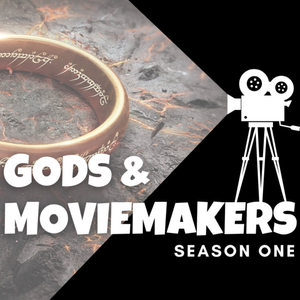
The Lord of the Rings: The Fellowship of the Ring (2001)
In many ways, The Lord of the Rings: The Fellowship of the Ring perfectly demonstrates most of the tropes of a "Chosen One" type: An ordinary person chosen for an extraordinary task, guided by a mentor-type figure, and aided by a loyal support system. But who is the chosen figure in this film? Is it the hobbit, Frodo, or Aragorn, the king to be? In this episode we debate who has been chosen, and what biblical imagery may be present in our two potential chosen one characters. We also look at two of the primary influences on JRR Tolkien's writing: his Catholic faith and his experiences of trench warfare during the First World War (1914-18).
Episode Credits:
Many thanks to Dr Marian Kelsey and Dr James Connolly for their time and expertise.
Dr Kelsey is a Teaching Associate in Hebrew Bible at the University of Nottingham. Make sure to look out for her chapter, "Retellings of Biblical Narrative in Science Fiction and Fantasy" in the forthcoming Routledge Handbook of the Hebrew Bible in Contemporary Fiction and Poetry. You can find a full list of Dr Kelsey's publications on her website, or follow her on Twitter @MERKelsey.
Dr Connolly is an Associate Professor of Modern French History in the School of European Languages, Culture and Society at University College London. You can find him on Twitter @DrJamesConnolly.
A full list of books, articles, and other resources can be found on our website: godsandmoviemakers.com
Subscribers will gain access to extra content after each main episode broadcast. Become a subscriber at https://plus.acast.com/s/godsandmoviemakers.
Hosted on Acast. See acast.com/privacy for more information.
Next Episode

Dune (2021)
When you imagine the distant future, what do you see? Some, like Gene Roddenberry, creator of Star Trek, envision a future utopia, where humankind has finally worked through their differences, solved hunger and poverty, and have united in a mission of peace and discovery. For many others, like HG Wells, author of The Time Machine, the future is a post-apocalyptic dystopian nightmare of our own creation. In his 1965 novel Dune, Frank Herbet envisioned a future that has advanced as much as it digressed, rebuilding the feudalism of our past in far off galaxies. Dune clearly doesn't present a utopian future. But are utopias really all they're cracked up to be?
In this episode, we look at Deni Villeneuve's 2021 adaptation for the big screen (the first, in what will be a series of films). We explore the nature of utopia, and dissect the biblical parallels in a fictitious future world filled with ritual, belief, and religious imagery. What sort of figure is our protagonist, Paul Atreides? Is he a "chosen one" akin to Moses? Or is he more of a classic Jesus-type saviour figure? Finally, we pull the future all the way back to the biblical past to ask: Can you read the Bible as science-fiction?
Glossary:
A glossary of terms used in Dune, and their relationship to real-world words / concepts, can be found on our website: www.godsandmoviemakers.com/episodes-104-dune
Episode Credits:
Many thanks to Katherine (Kat) Gwyther for her time and expertise.
Kat is a PhD researcher in Hebrew Bible at the University of Leeds, working on utopia and Exodus. She’s interested in how utopian literature and science fiction (and the related criticism) can enrich our understanding of biblical texts and their reception. You can find Kat on Twitter @KatGwyther.
Subscribers will gain access to extra content after each main episode broadcast. Become a subscriber at https://plus.acast.com/s/godsandmoviemakers.
Hosted on Acast. See acast.com/privacy for more information.
If you like this episode you’ll love
Episode Comments
Generate a badge
Get a badge for your website that links back to this episode
<a href="https://goodpods.com/podcasts/gods-and-moviemakers-260796/the-last-temptation-of-christ-1988-30798980"> <img src="https://storage.googleapis.com/goodpods-images-bucket/badges/generic-badge-1.svg" alt="listen to the last temptation of christ (1988) on goodpods" style="width: 225px" /> </a>
Copy
